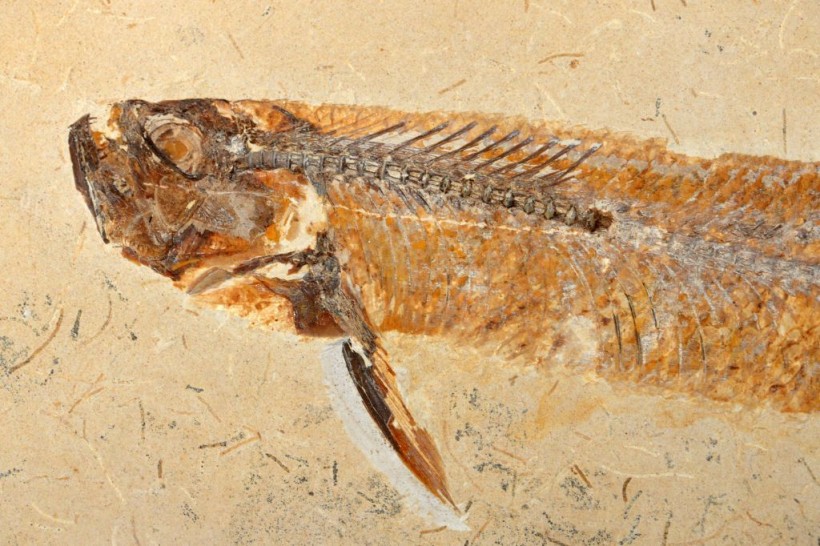Scientists from the University of Michigan and the University of Birmingham have examined the cranium of a fish that lived roughly 319 million years ago. According to Earth.com, the investigation revealed a definite, 3D item within the ancient skull that could only be the fish's brain.
It is uncommon since soft parts, such as brains, normally degrade and are seldom fossilized when an animal dies. The organ has provided researchers with a window into the brain structure and early history of ray-finned fishes, a large group that includes over 30,000 individual species, accounting for almost half of all known vertebrate species.

Picture taken in a warehouse near Le havre, western France, on May 24, 2022, shows an actinopterygian fish, one of the 998 fossils dating from the 100 million-year-old Cretaceous period.
CT Scan Reveals Oldest Fossilized Vertebrate Brain Ever Found
Hundreds of millions of years ago, a fish died and was buried in sediments where it eventually became fossilized. Today, it has become the star of a study after revealing the oldest fossilized vertebrate brain ever found.
The ancient skull was found on the roof of a coal mine in Lancashire in the UK almost 100 years ago in 1925. At that time, researchers identified it as the new species Coccocephalus wildi, and put it on display at the Manchester Museum. There were no other body parts found that belonged to the skull.
Researchers were studying it and have used a CT scan to visualize the structure of the skull. But through a serendipitous event, they found that it has several features in vertebrate brains with a bilaterally symmetrical structure, hollow spaces like those found in ventricles, and multiple filaments that extend toward openings of the skull that looks like cranial nerves preserved in exquisite detail.
Rodrigo Figueroa, a doctoral student at the University of Michigan and the lead author of the study, wrote that the species is a ray-finned fish that is a diverse group made up of about 30,000 species, including swordfish and trout.
Paleontologist Sam Giles from the University of Birmingham said in a press release that the findings of a 3D well-preserved vertebrate brain give new insight into the neural anatomy of finned fish. He added that it tells a more complicated pattern of brain evolution than by living species along to define when bony fishes evolved.
Soft Tissues Can Be Preserved
Preservation of soft tissues is much rarer as they easily degrade, unlike bones. But the study's senior author Matt Friedman noted that the important conclusion of their findings is that soft parts, such as the brain, can be preserved and that they may even be just hiding in fossils for a long time.
The team was able to compare the structure of the ancient brain to existing animals and identified significant differences, CNet reported. Whereas all modern-day ray-finned fish have brains that fold outward since they develop in the embryo, the ancient brain folds inward.
Giles explains that the brain of Coccocephalus wildi resembles those found in paddlefish and sturgeon, which are considered primitive fish since they diverged from ray-finned fish species over 300 million years ago.
The discovery made researchers realize that there could be other soft parts being preserved in fossils and it inspired them to look at fossil fish heads with a new and different perspective.
Their study, titled "Exceptional Fossil Preservation and Evolution of the Ray-finned Fish Brain," is published in the journal Nature. Watch the video below to learn more:
RELATED ARTICLE: 525-Million-year-Old Fossils of a Tiny Sea Creature With a Preserved Nervous System Solves Century-old Debate on Brain Evolution
Check out more news and information on Archaeology on Science Times.














